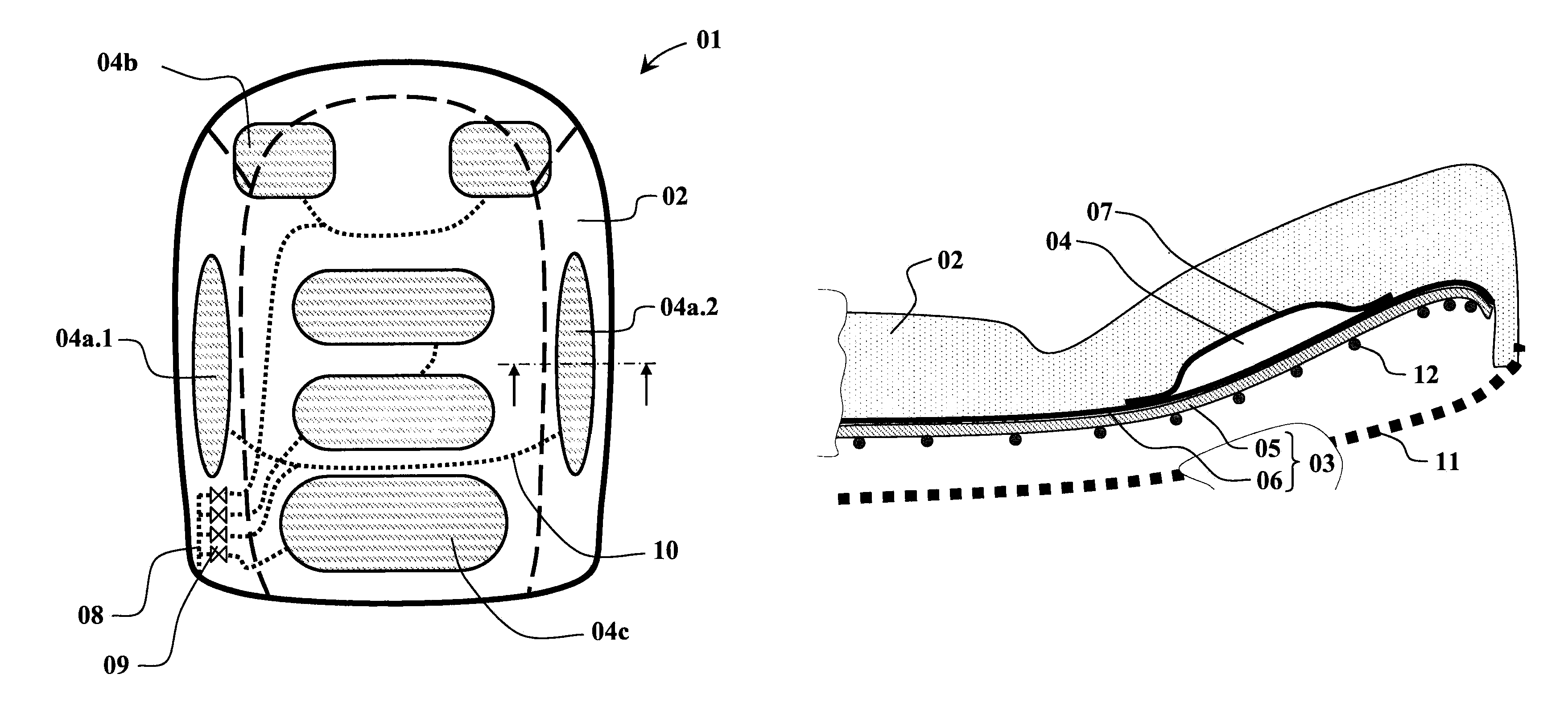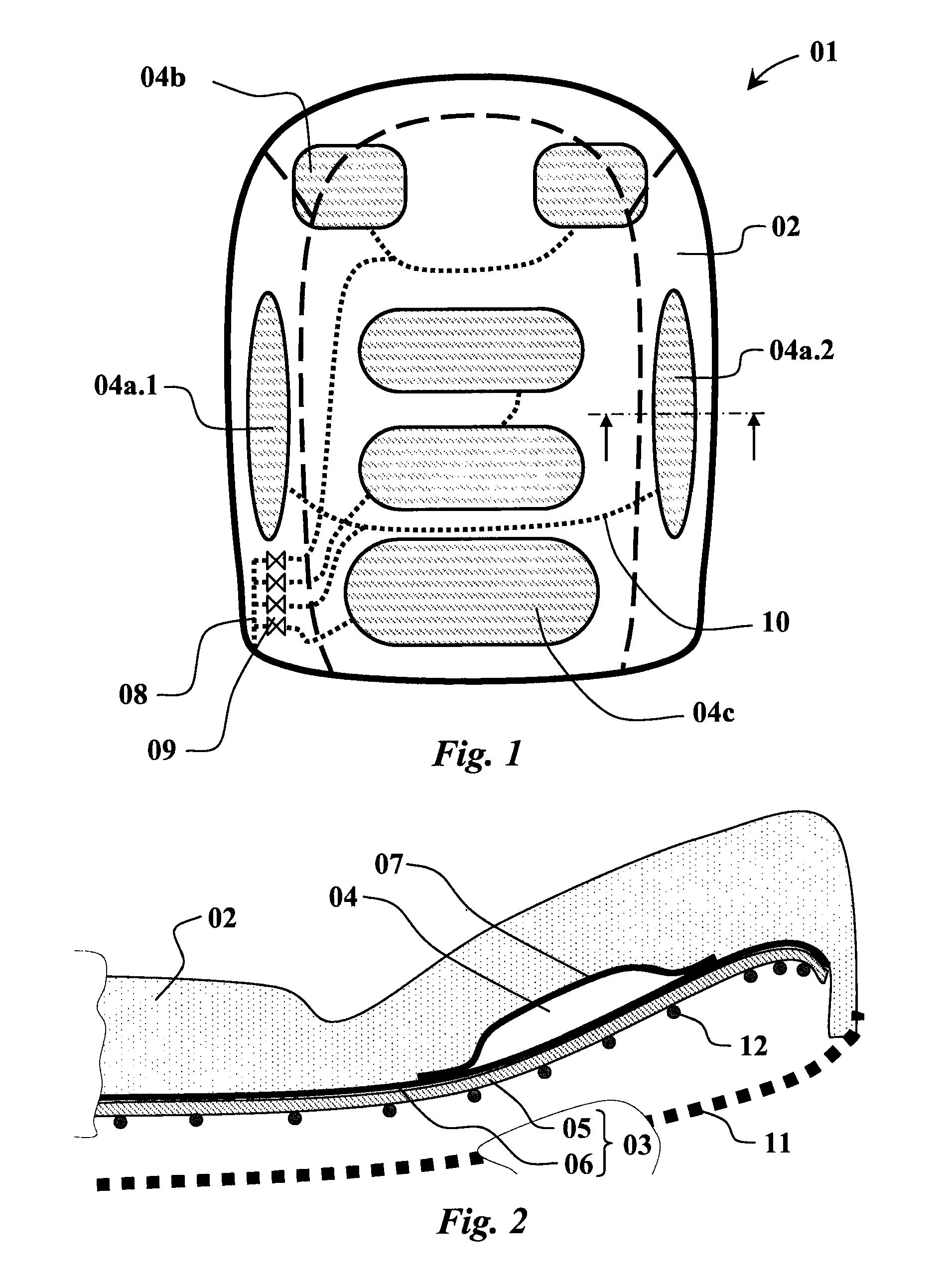Seat cushion with bubble elements
a seat cushion and element technology, applied in the field of seat cushions, can solve the problems of slowed seat production, high risk of individual air bubble displacement or air supply disruption, and disadvantageous assembly complexity, and achieve the effect of low stability of the carrier elemen
- Summary
- Abstract
- Description
- Claims
- Application Information
AI Technical Summary
Benefits of technology
Problems solved by technology
Method used
Image
Examples
Embodiment Construction
[0036]FIG. 1 shows an exemplary embodiment of a seat cushion 01 having a plurality of bubble elements 04. As is evident from this figure, first bubble elements 04a.1 and 04a.2 are disposed on both sides of the seat and are intended to provide the driver with improved lateral support. In the shoulder region, provision is further made for bubble elements 04b. Support in the region of the lumbar vertebrae is enabled with the aid of an additional bubble element 04c. By means of air conduits 10, bubble elements disposed in parallel are connected to one another. In this connection, these interconnected bubble elements are always simultaneously supplied with compressed air. The central air inlet 08 is laterally disposed on a lower side. This air inlet is guided towards a valve unit 09 from which the individual bubble elements can be supplied with compressed air.
[0037]The air inlet 08 having the valve unit 09 and the air conduits 10 forms the compressed air distribution system. This system ...
PUM
 Login to View More
Login to View More Abstract
Description
Claims
Application Information
 Login to View More
Login to View More - R&D
- Intellectual Property
- Life Sciences
- Materials
- Tech Scout
- Unparalleled Data Quality
- Higher Quality Content
- 60% Fewer Hallucinations
Browse by: Latest US Patents, China's latest patents, Technical Efficacy Thesaurus, Application Domain, Technology Topic, Popular Technical Reports.
© 2025 PatSnap. All rights reserved.Legal|Privacy policy|Modern Slavery Act Transparency Statement|Sitemap|About US| Contact US: help@patsnap.com



